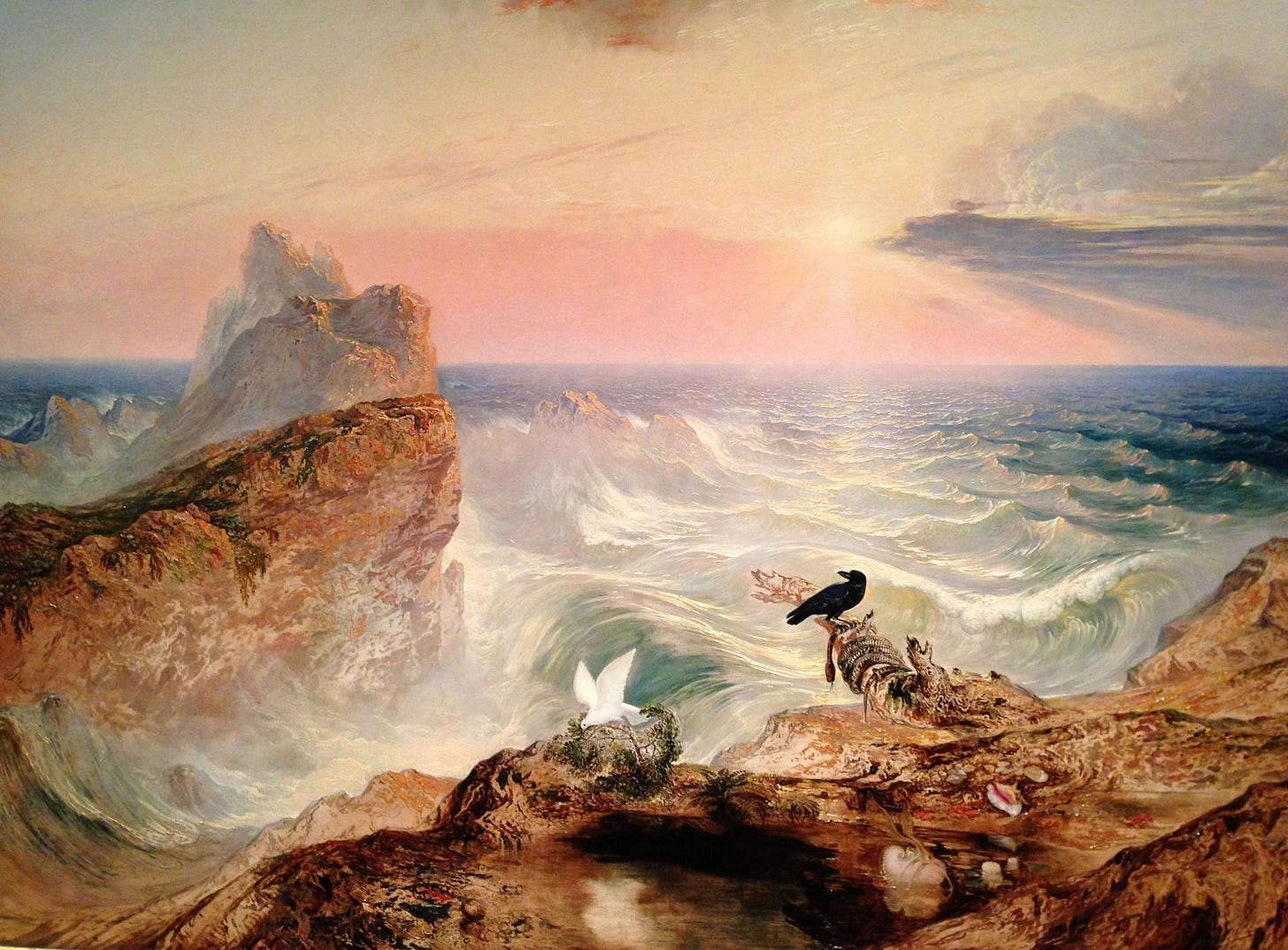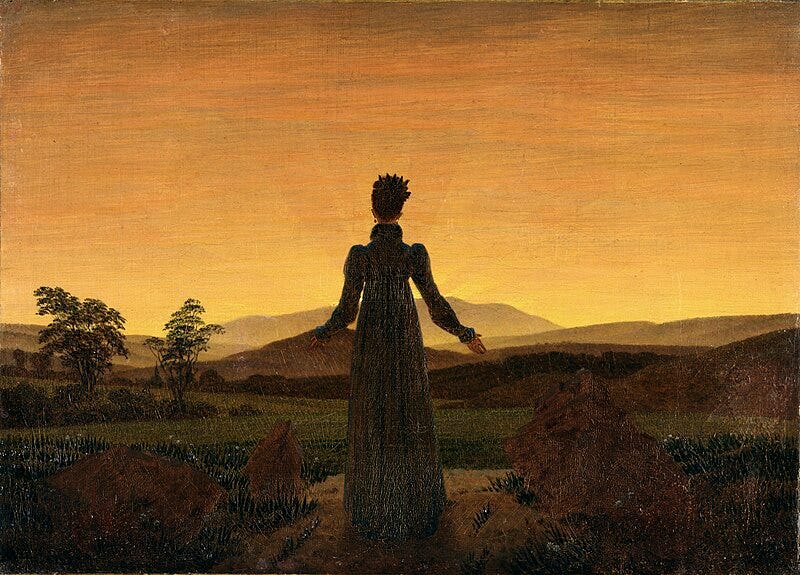In Caroline M. Yoachim's Fragile Worlds, Acts of Care Take Center Stage
Caroline M. Yoachim (yo-kum) is one of my favorite Seattle speculative fiction writers. Because of the limits of the form, most of my favorite short stories are equal parts narrative and thought experiment: evocative vehicles for an interesting idea instead of full-on narratives. But Yoachim is the rare author who can consistently pack epic tales into a small space, making 20 pages feel like an entire novel.
My favorite part of her body of work is the three stories that she published in literary adventure fantasy magazine Beneath Ceaseless Skies. While Yoachim may not have intended these stories to be a set, I thought they were cohesive enough to be read that way. Each one imagines a people who are physically fragile in some way, mapping intangible struggles of human existence onto their alien forms.
The first of these stories, “The Land of Empty Shells”, consists of two interlocking, decade-spanning narratives. The first is a folktale about a people of clay who suffer until two siblings build a priesthood to negotiate with the gods. The second is the tale of a family of these clay people, who fall on hard times after offending the priesthood.
The unusual nature of these clay people is foregrounded from the beginning. The first scene depicts two first-time parents giving birth to a child by separating “babyflesh” from their body:
Terra reached down to her thigh and pulled flesh from her leg into a bulge above her hip. Dziko did the same. They gathered a thin layer of flesh from their legs, a handful from their shoulders, a bit from their rounded bellies—never too much from any one place. Soon, each of them had a lump the size of a baby resting on their hip.
This scene was visceral and disturbing, but it also had a strange sort of magic. When compared to the biological incomprehensibilities of sex and childbirth, the ritual of sculpting babyflesh seemed grounded and immediate. It made me feel what I already know to be true— that mother and son are truly created from one flesh.
Equally visceral is the death of the folktale’s priest-brother, whose “flesh flowed down the sides of the temple” while he prays for a respite from the rain. The rain itself is so horrified by his death that it vows to limit its fall and sound thunder as a warning.
But perhaps the most visceral part is Terra’s own heroic sacrifice. After seeing the depleted state of her family’s flesh, Terra begs her daughter Uruvara to take all of her flesh for the sake of a new child. When Uruvara tearfully smashes her mother’s clay face between her palms, you can feel it in your bones.
Yoachim continues to play with fragile forms in her Hugo-nominated story “Carnival Nine”. The steampunk-inspired circus performers of “Carnival Nine” are made not of clay but of gears, contraptions with a finite number of “turns”. An absence of turns is equivalent to death. When the protagonist Zee gives birth to a child with an unusually low number of turns, she decides to use her turns to help him get through the days, sacrificing her literal life force so that her child can live his happiest possible life:
Vale winds all the way down, hard working and supportive to the end. On his last day, he apologizes again and again for abandoning us. We’ve already forgiven him, but he cannot forgive himself. The other carnies start giving back the turns they borrowed from me, helping Mattan through his days. I have no turns to spare—there have never been enough turns, even for me, and I’ve always had more than my share.
The turning mechanic allows us to view a concept as old as aging with fresh eyes. As Tim Urban notes in “Your Life in Weeks”, we rarely see our mortality in such lucid terms. The vagueness of these things is usually a blessing. But if we never take time to reflect on the scarcity of it all, we become blind. “Carnival Nine” reminds us that our vitality is fleeting and something to be treasured.
The final story in this triptych is “Seasons Set in Skin”, a tale set in some fantastical version of Japan. This story follows an aging master of defensive tattoo magic, who reluctantly sends her daughters to do battle against foreign fae invaders. She covers her daughters in the blood of her enemies, creating an immune system of ink to protect them from a fearsome bodysnatching enemy.
It is in this story that Yoachim’s worldbuilding burns brightest. “Seasons Set in Skin” packs the narrative punch of a novel many times its size. In just 16 pages, we learn the closeness of the relationship between Horomachi and her sister Aya, the existential stakes of the conflict, and even a bit about the alien nature of the fae. There are no easy answers in “Seasons Set in Skin”, which causes us to question the black-and-white nature of the conflict even as it veers towards its natural heroic conclusion.
Yoachim is clearly an art lover, dazzling us with accents of black, red, and gold:
Even in the dim predawn light, her skin was striking. She was a canvas covered in black and red, decorated with an intricate design of dragons and flowers and koi. There were swirls of water below her waist and swirls of clouds above. Water lilies floated on her hip, the line where water met sky.
But underneath all that worldbuilding, “Seasons Set in Skin” is a story about family. The sisterly love that Suki has for Aya and the motherly love that Horomachi pours into her craft still steal the show, even amidst a backdrop of shimmering shades and clashes of civilization.
When I first read these stories, I was unable to draw an explicit connection between them that was as strong as the intuitive connection I felt. I knew they shared a weird physicality, but there had to be something deeper.
In the 1980s, Arlene Daniels coined the term “invisible labor” to describe jobs that are necessary for society but often go unacknowledged, uncompensated, and uncounted. This includes tasks like housework, social planning, and emotional management of relationships. Most of the burden falls on women, especially mothers. And because invisible labor often pulls its laborers out of the spotlight, it tends to stay invisible.
I wouldn’t go so far as to say that these stories are about invisible labor, or even that invisible labor is a key focus. But they are written in that same spirit. Plenty of real-life mothers make similar sacrifices as the characters in “The Land of Empty Shells”, “Carnival Nine”, and “Seasons Set in Skin”. However, the illegibility of the real world allows us to couch these sacrifices in the unknown.
We rarely get a glimpse of their impact or the counterfactual, the alternate timeline that a caregiver may have lived. This illegibility grants us tacit permission to look away, to say that their acts are just the way of the world. But the visceral worlds of Caroline M. Yoachim do not grant us that same permission. Especially in the zero-sum mechanical reality of “Carnival Nine”, we are forced to look Zee’s acts in the face and see them for the sacrifices they are.
The physical stuff of these three stories may not have much in common: tattoos from fantasy Japan, gears from steampunk circuses, and clay-flesh from animistic tribes. But in each story, Yoachim uses its strange stuff to convert intangible sacrifices of care into things you can see.








